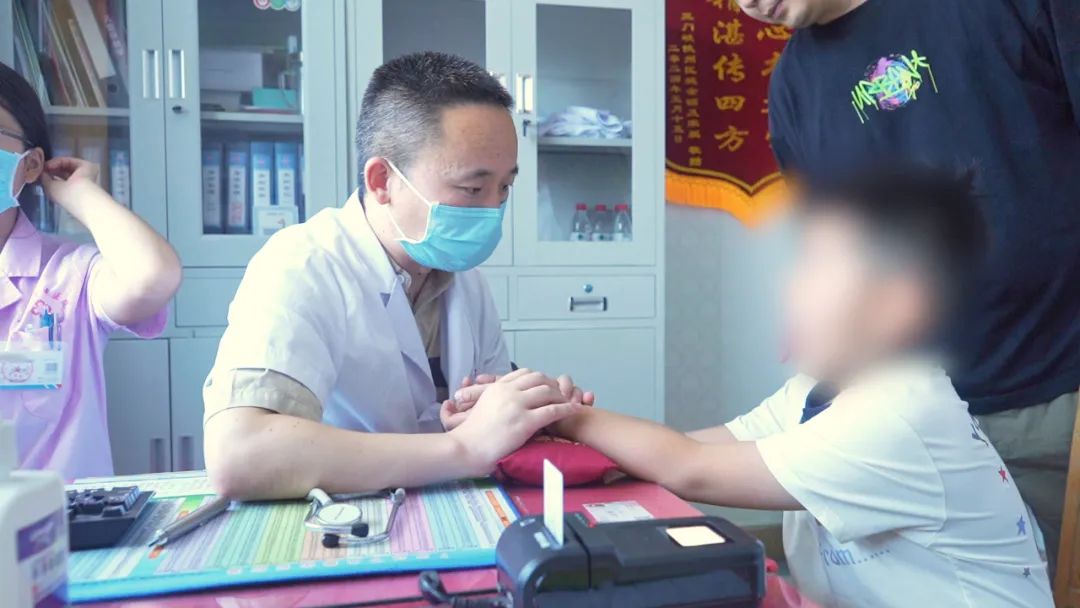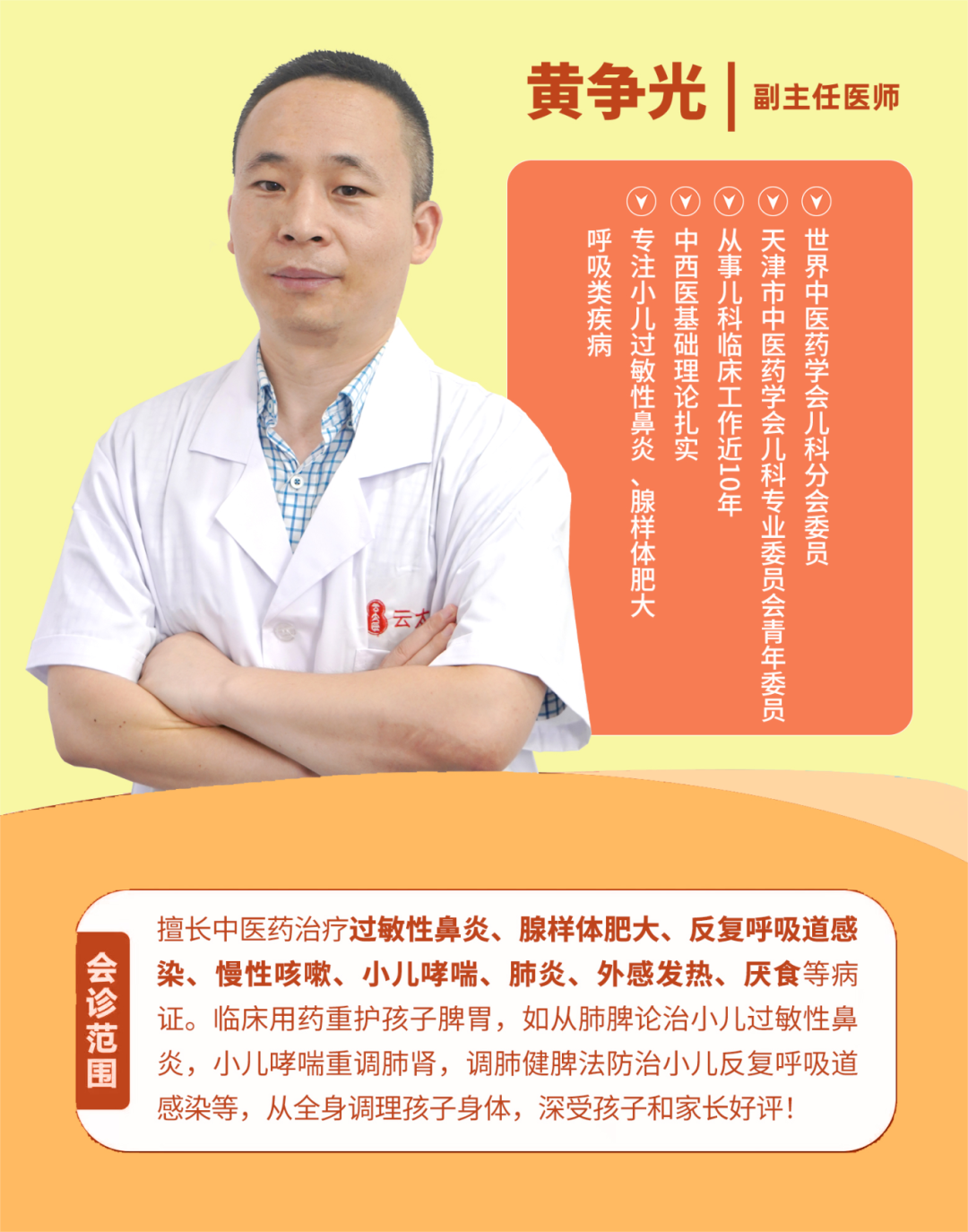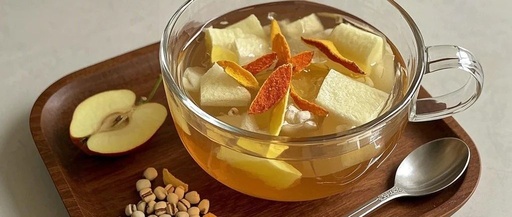
In the field of children’s health, the issue of rhinitis is increasingly drawing the attention of parents. The recurrent nature of rhinitis in children is often related to the disharmony of the lungs, spleen, and kidneys, with one key factor frequently overlooked—phlegm-dampness obstruction.
In Traditional Chinese Medicine (TCM), “phlegm-dampness” in children refers to the accumulation of food and issues with fluid metabolism, resulting in the production of sticky, turbid substances. Nowadays, children are particularly prone to phlegm-dampness under three circumstances:

1. Poor Diet: Many children consume excessive amounts of yogurt, cake, and fried chicken. Statistics from outpatient clinics show that 73% of children with rhinitis consume more than 30 grams of sweets daily.
2. Lack of Physical Activity: After school, children often sit to do homework or play on tablets, with less than 30 minutes of outdoor activity each day. TCM states that “the spleen governs the limbs”; prolonged inactivity can harm the spleen.
3. Exposure to Cold: Staying in air-conditioned rooms for too long, changing clothes immediately after sweating, and repeated colds can weaken the lung’s resistance. It is important to note that a child’s nasal mucosa is only one-third the thickness of an adult’s.
01Case Study
Take 8-year-old Xuan Xuan as an example. He has suffered from rhinitis for 2 years. When his nasal congestion is severe, he can only breathe through his mouth. Every morning, he experiences continuous sneezing, with clear and copious nasal discharge. His symptoms worsen when exposed to cold air or during seasonal changes. Additionally, Xuan Xuan often feels heavy-headed, as if something is pressing down, experiences fatigue in his limbs, lacks energy, has a poor appetite, and his stools are sticky and difficult to flush away.
 Upon examining Xuan Xuan’s tongue coating, it was found to be thick and white, with clear tooth marks on the sides, and his pulse was slippery. Upon inquiry, it was revealed that Xuan Xuan experiences significant academic pressure and often snacks on fast foods like milk tea and fried chicken during his free time, while rarely engaging in outdoor activities.
Upon examining Xuan Xuan’s tongue coating, it was found to be thick and white, with clear tooth marks on the sides, and his pulse was slippery. Upon inquiry, it was revealed that Xuan Xuan experiences significant academic pressure and often snacks on fast foods like milk tea and fried chicken during his free time, while rarely engaging in outdoor activities.
From a TCM diagnostic perspective,Xuan Xuan’s condition is characterized by spleen deficiency with excess dampness as the root cause, and phlegm turbidity obstructing the nasal passages as the manifestation..
The spleen and stomach are the “source of phlegm production”; when a child’s spleen and stomach are weak, fluids cannot be properly transformed and transported, leading to the accumulation of phlegm. The lungs serve as the “repository of phlegm”; phlegm-dampness obstructs the meridians, primarily affecting the nasal passages. When lung qi is obstructed, its dispersing function is impaired, resulting in symptoms of nasal congestion and runny nose, while the clear yang fails to ascend, causing heaviness in the head and dampness obstructing the limbs, leading to fatigue and lethargy in the child.
Therefore,the approach to managing rhinitis in children is to strengthen the spleen and resolve phlegm, thereby fundamentally interrupting the generation of phlegm-dampness; and to disperse lung qi and open the nasal passages.
Here is a recommended formula for management: Chen Pi (Chen Pi), Fu Ling (Poria), Bai Zhu (White Atractylodes), Xin Yi Hua (Magnolia Flower), Cang Er Zi (Xanthium), Jiang Ban Xia (Pinellia), and Zhi Gan Cao (Honey-Fried Licorice).
In this formula, Chen Pi serves as the monarch herb, which has the effects of regulating qi, strengthening the spleen, and drying dampness to resolve phlegm, effectively cutting off the source of phlegm-dampness generation;
Fu Ling and Bai Zhu work together to strengthen the spleen and drain dampness, aiding the spleen and stomach in better transforming food and fluids;
Jiang Ban Xia is responsible for resolving phlegm and descending counterflow, clearing away already formed phlegm turbidity;
Xin Yi Hua and Cang Er Zi are warm and open the nasal passages, specifically targeting symptoms of nasal congestion and runny nose, guiding the herbs upward to reach the nasal passages;
Zhi Gan Cao harmonizes the other herbs while also replenishing the middle qi.
Although this formula appears simple, it is gentle yet effective, first strengthening the spleen, then resolving phlegm-dampness, and finally opening the nasal passages, fundamentally improving the child’s phlegm-damp constitution and thus addressing the issue of rhinitis.
02Dietary Recommendations
In addition to the above formula, I would like to share a daily dietary remedy to help children eliminate phlegm-dampness and strengthen the spleen and stomach.
Chen Pi Yi Mi Drink(suitable for children over 3 years old)

Ingredients:5g Chen Pi (dried tangerine peel, sliced), 10g roasted Yi Mi (Job’s tears), 1/4 apple, 2 slices of ginger
Method:Boil in cold water for 20 minutes, adding 1 piece of rock sugar.
To manage a child’s rhinitis, the key is to strengthen the spleen and resolve phlegm, restoring the function of “spleen ascending and lung descending” to normal. As stated in the “Pediatric Essentials”:“To treat children’s diseases, one must first regulate the spleen and stomach.” Parents should not only think about medication when they notice nasal congestion in their children but also pay attention to changes in their child’s tongue coating, stools, and appetite to fundamentally prevent the recurrence of rhinitis.
 Final Thoughts
Final Thoughts

If your child is also suffering from coughing, rhinitis, recurrent adenoid issues, or other pediatric problems, feel free to leave a message or send a photo of their tongue coating for consultation. For inquiries, you can search for V:yty03721 or scan the QR code below, and I will answer your questions one by one.
 FreeConsultationon Parenting Issues
FreeConsultationon Parenting Issues
Scan to consult anytime

